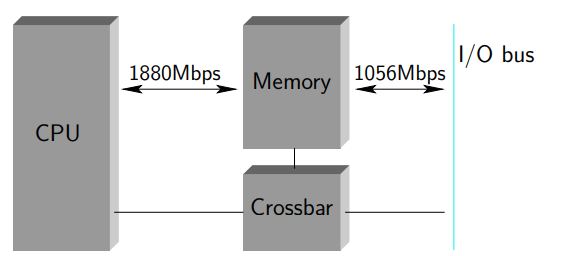I⧸O and Devices

A CPU accesses physical memory over a Bus
- Devices access memory over I/O bus with DMA
- Devices can appear to be a region of memory
- A crossbar can connect any input to any output
A bridge connects two different buses
The I⧸O Advanced Programmable Interrupt Controller handles interrupts from devices
What is memory?
Communicating with a device
Memory-mapped device registers
- Some ranges of physical addresses correspond to device registers
- Load and store instructions get status or sends instructions to a device
Device memory
- Device may have memory and the OS can write directly to the device through I/O Bus rather than RAM
Direct Memory Access (DMA)
- Place instructions to device in main memory
Example
Parallel Port
- Every bit corresponds to a pin
There are three primary types of device registers
- Status
- Tells something about device current state
- Read
- Command
- Issue a command to the device
- Write
- Data
- Used to transfer data to and from device
Using Physical Addresses
volatile int32_t *device_control = (int32_t *) 0xc00c0100;
*device_control = 0x80; /* give command */
int32_t status = *device_control; /* get back status */
OS must map device addresses to virtual addresses and ensure they are non-cacheable
volatilekeyword tells compiler to not optimize- Read and write directly to RAM
- Assign physical address at boot time to avoid conflicts